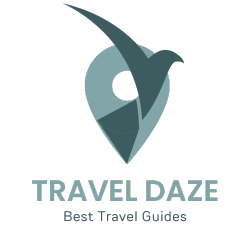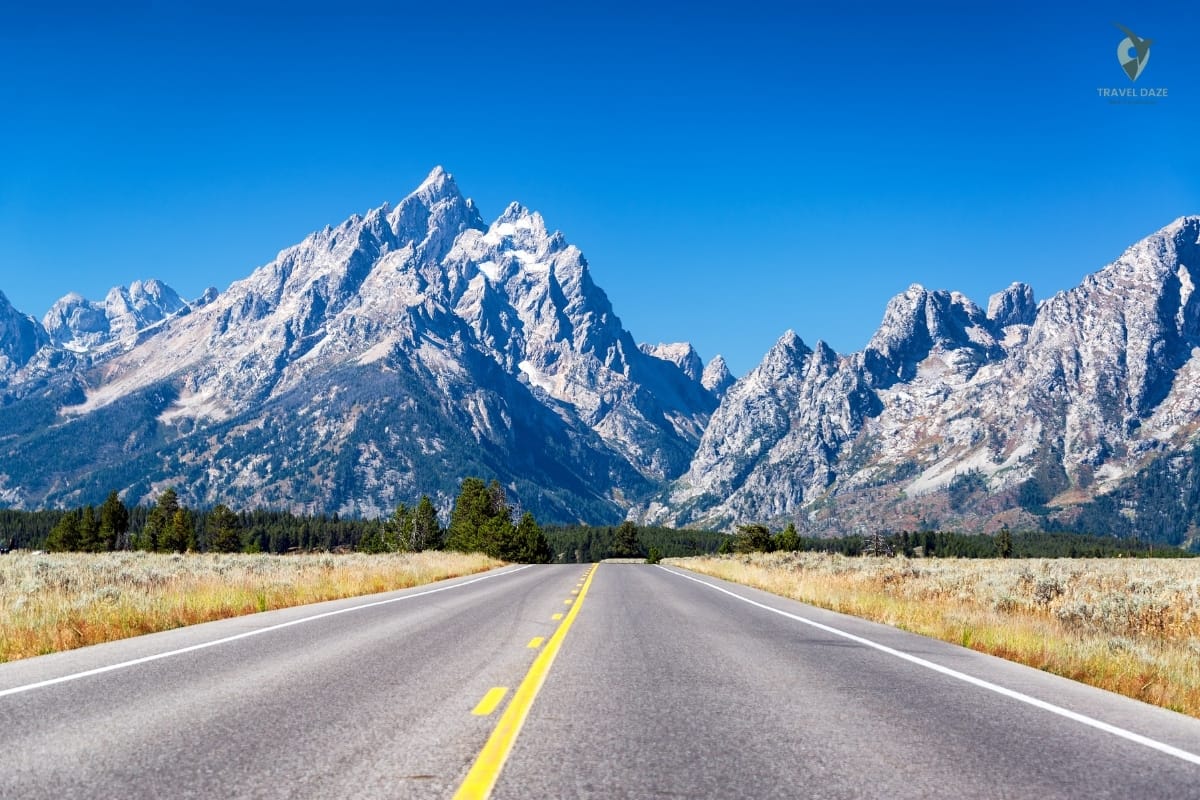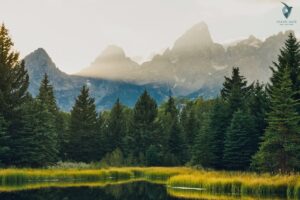It’s almost impossible not to feel small under the towering peaks of Grand Teton National Park. From the incredible views of the Tetons to pristine lakes and hidden trails, the park is a paradise for anyone with a love for nature and adventure.
Table of Contents
ToggleThere’s something for every traveler here, from serene photo spots like Mormon Row to challenging hikes up Cascade Canyon. Here’s how to make the most of a visit to Grand Teton.
Iconic Viewpoints
The viewpoints in Grand Teton National Park alone are worth the trip, each offering a new perspective on the Teton Range.
Snake River Overlook
One of the most iconic spots is Snake River Overlook, famously photographed by Ansel Adams. Early morning is perfect for catching a calm river framed by the mountains. The overlook gives you views of the Tetons and is ideal for those who want a classic park shot without the hike.
Oxbow Bend
At Oxbow Bend, you’ll find one of the most peaceful, scenic reflections in the park. The river creates a near-perfect mirror image of the Tetons. This spot is popular for wildlife sightings; watch for moose, otters, and birds. Sunset adds a warm glow to the scene, making it even more memorable.
Schwabacher Landing
For photographers, Schwabacher Landing is another favorite. The calm water and foreground of river rocks make it a dreamy location for capturing the Tetons. Arriving early or late in the day is best here, too, as it’s a popular spot but worth every second spent waiting.
Hiking Trails to Discover
Hiking in Grand Teton National Park allows you to get up close with nature. The trails here suit everyone, from beginners looking for a gentle walk to those who love a good climb with an impressive elevation gain. You’ll find breathtaking vistas, serene alpine lakes, and diverse wildlife along the way, making every step of your journey unforgettable. For those seeking short hikes in Grand Teton, there are plenty of options that offer incredible views without the need for a full-day commitment. Whether it’s a leisurely stroll around Jenny Lake or a quick trek to Taggart Lake, these trails are perfect for experiencing the park’s beauty in just a few hours.
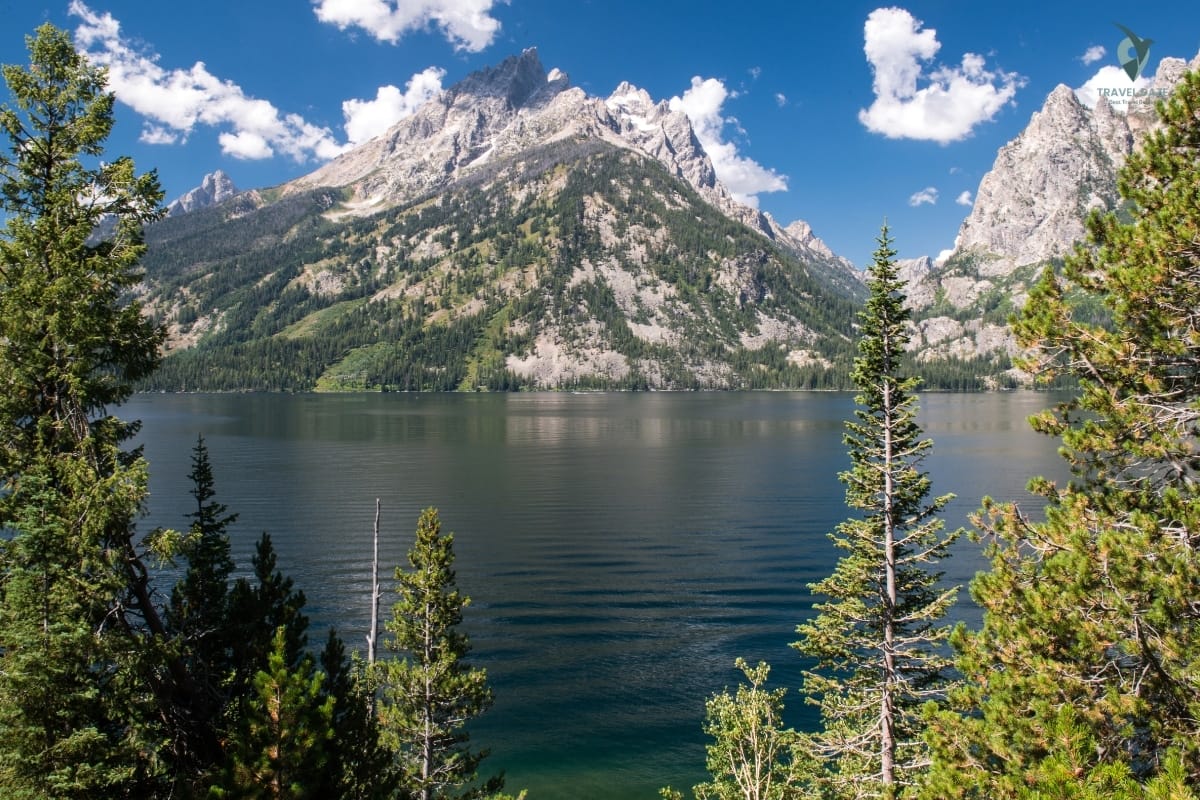
Taggart Lake Trail
Taggart Lake Trail is perfect for an easy hike with rewarding views. A three-mile loop, it winds through a mix of forest and open meadows. The lake itself reflects the Tetons beautifully on a calm day, and the trail is a great start for those new to the park.
Cascade Canyon Trail
If you’re up for a challenge, try Cascade Canyon Trail. This hike takes you through lush forests, waterfalls, and narrow valleys with towering rock walls. It’s a moderate to challenging hike due to elevation gain, but the journey to the canyon is worth it. The views change with each turn, keeping the experience fresh and exciting.
Leigh and String Lakes Trail
This easy hike loops around Leigh and String Lakes. The path is gentle, making it family-friendly, and it’s ideal for anyone wanting to relax with a lake view. String Lake even has spots for a quick swim or picnic along the shore.
Wildlife Watching Opportunities
Wildlife is abundant in Grand Teton, and the park is one of the best places in the U.S. to spot some iconic animals.
Prime Wildlife Locations
For wildlife spotting, check out Snake River Overlook, Oxbow Bend, and Moose Junction. These areas are well-known for sightings of bison, elk, and even the occasional bear. Early morning or late evening is ideal for seeing wildlife, as animals are more active during these times.
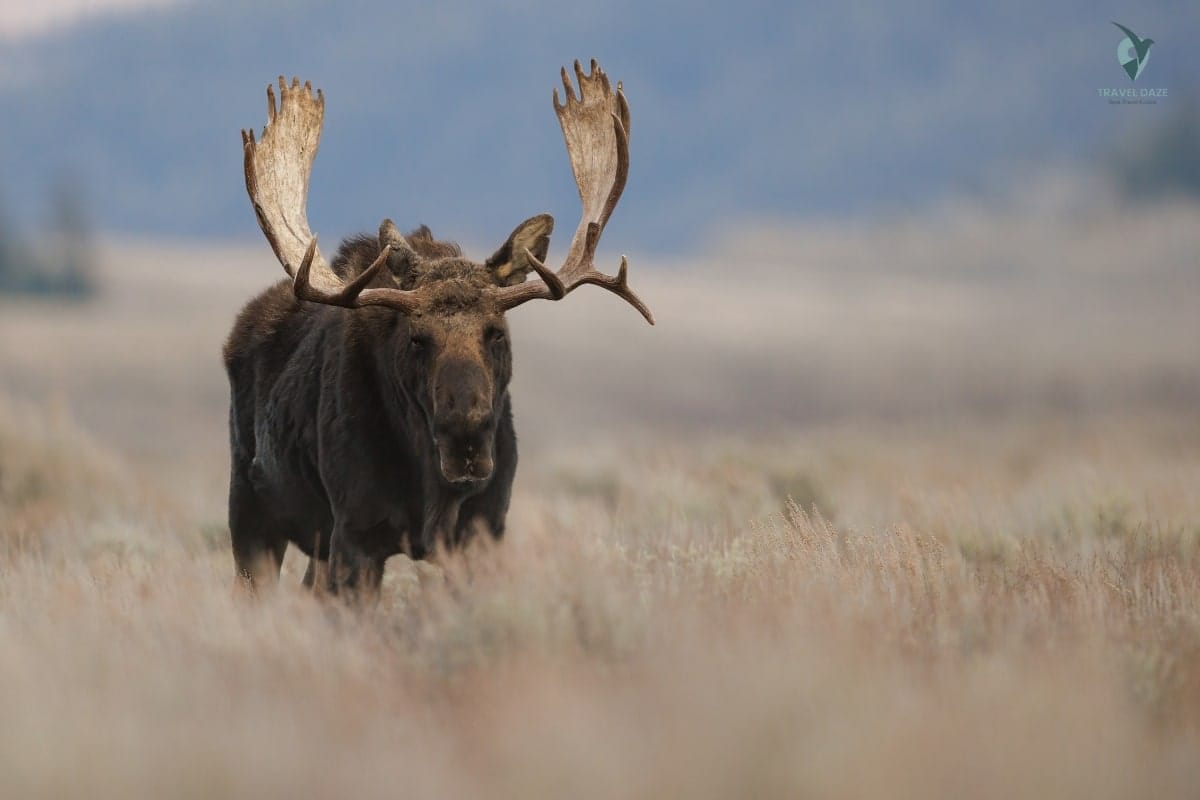
Guided Tours
If you want to learn more about the animals, consider joining a ranger-led tour. They offer insights into the park’s ecosystem, and guides can help you spot animals you might miss on your own. Jackson Hole also has various wildlife tours, where guides know the best spots.
Historic and Cultural Landmarks
The historical sites in Grand Teton add depth to the natural beauty, reminding visitors of the pioneers and settlers who shaped this region.
Mormon Row Historic District
Mormon Row, with its rustic barns and open plains, is a fantastic spot for history and photography lovers alike. The Moulton Barn, set against the Tetons, is iconic here. These homesteads were built by Mormon settlers, giving the area a distinct cultural feel. Sunrise is a magical time for photos, capturing the barn’s silhouette against the Tetons.
Menor’s Ferry Historic District
This area offers a glimpse into pioneer life, complete with a restored ferry and general store. Menor’s Ferry takes you back in time and shows how early settlers crossed the Snake River. The general store has old-fashioned goods and a small exhibit on local history, making it an interesting stop.
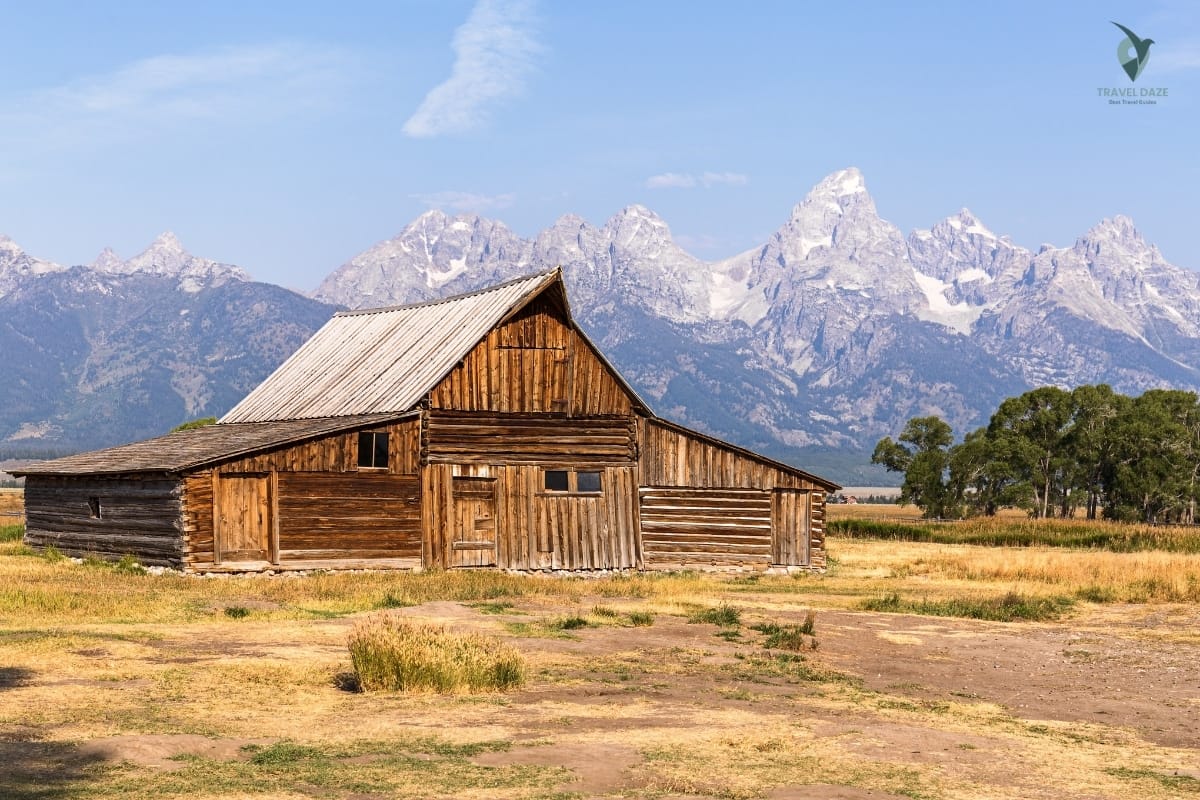
Outdoor Adventures Beyond Hiking
Horseback Riding
One of the best ways to experience the rugged terrain is on horseback. Several stables around Jackson Hole offer guided tours through scenic valleys and foothills. Riding through open fields with views of the Teton mountain range gives you a true Western feel.
Boating and Paddling on the Lakes
Leigh Lake and String Lake are perfect for canoeing or kayaking, especially on calm days when the mountains reflect off the water. Rentals are available nearby, or bring your own gear if you’re ready for a day on the water. The experience of paddling with the Tetons as a backdrop is unforgettable.
Scenic Drives
If you’re more of a road trip enthusiast, Grand Teton’s scenic drives offer stunning views and easy access to trailheads and viewpoints.
Teton Park Road
This main road through the park offers breathtaking views around every corner, including stops at Jenny Lake, Lupine Meadows, and multiple overlooks. Spend a few hours here, pulling over at viewpoints and trailheads to fully experience the park.
Gros Ventre Road
Gros Ventre Road takes you through quieter areas with beautiful views of the Gros Ventre mountain range. The road eventually leads to campgrounds and trails, making it a great route for those wanting a peaceful, less crowded drive.
Practical Tips for Visiting Grand Teton
Best Times to Visit
Each season offers something different in the Tetons. Spring brings wildflowers, summer is perfect for hiking trails, fall colors are incredible, and winter provides a quiet, snowy landscape. Plan around the weather for what you most want to do.
Getting There and Around
The closest airport is in Jackson Hole, with the park just a short drive away. Yellowstone National Park is also nearby, so consider adding it to your itinerary. A rental car is ideal, as the park has no shuttle system and you’ll want the freedom to explore at your pace.
Packing Essentials
Bring layers for the variable mountain weather, as it can change quickly, especially at higher elevations. Bear spray is a must for safety, and don’t forget sunscreen, water, and good hiking boots.
Conclusion
Grand Teton National Park is filled with breathtaking views, rich history, and endless opportunities for adventure. From iconic photo spots like Mormon Row and the Snake River Overlook to thrilling hikes and wildlife encounters, there’s no shortage of things to do.
Whether you’re here to hike, take in the sights, or just unwind in nature, the Tetons will leave a lasting impression. Pack a camera, lace up your boots, and get ready for a trip you’ll never forget.
FAQ: Exploring Grand Teton National Park
1. What is the best time of year to visit Grand Teton National Park?
The park is beautiful year-round, but summer (June to September) offers the best weather for hiking, boating, and scenic drives. Fall (late September to October) has fewer crowds and incredible autumn colors, while winter (November to March) is great for those interested in snowshoeing or skiing.
2. Are there entrance fees for Grand Teton National Park?
Yes, entry to Grand Teton National Park costs $35 per vehicle, valid for seven days. If you plan to visit multiple national parks in the area, such as Yellowstone, consider an annual National Park Pass.
3. Where are the best spots to view the Teton Range?
Top viewpoints include Snake River Overlook, Oxbow Bend, and Schwabacher Landing. These spots offer incredible views of the Tetons, especially during sunrise and sunset.
4. Are there easy hikes in Grand Teton National Park for beginners?
Yes, Taggart Lake Trail, Leigh Lake Trail, and String Lake Loop are all beginner-friendly hikes with minimal elevation gain. They offer beautiful lake and mountain views without a strenuous climb.
5. Can I camp inside Grand Teton National Park?
Yes, the park has several campgrounds, including Jenny Lake, Gros Ventre, and Colter Bay. Some campgrounds require reservations, while others are first-come, first-served. There are also backcountry camping options for experienced campers with permits.
6. How far is Grand Teton from Yellowstone National Park?
Grand Teton and Yellowstone are about 31 miles apart, and many travelers visit both parks. The drive from Jackson Hole to Yellowstone’s South Entrance takes around 1 to 1.5 hours.
7. Are there wildlife viewing opportunities in the park?
Yes, wildlife is abundant in Grand Teton. You can often spot bison, elk, moose, and even bears in areas like Oxbow Bend, Moose Junction, and Snake River Overlook. Be sure to keep a safe distance and never approach wildlife.
8. Is bear spray necessary in Grand Teton National Park?
Bear spray is highly recommended for safety, especially if you’re hiking. Black bears and grizzly bears inhabit the park, so carrying bear spray and knowing how to use it is crucial.
9. Can I go horseback riding in Grand Teton National Park?
Yes, horseback riding is popular here, with guided tours available from stables near Jackson Hole and inside the park. These tours provide a unique way to experience the park’s scenery.
10. How do I get to Grand Teton National Park?
The nearest airport is in Jackson Hole, Wyoming, about 15 minutes from the park. If driving, the park is accessible via U.S. Highway 191.
